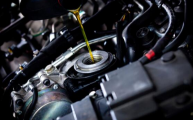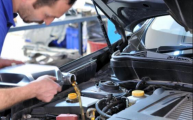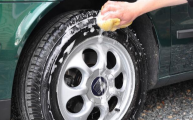The Reason Why the Car Windshield Could Break
Why doesn’t a strong blow break the windshield, and a light touch can blow it up into a thousand pieces? Stress, moisture, and cracks created by fatigue stress are the explanation. Although at first glance, the state of your windshield may seem perfect, the reality can be very different, and its real resistance to any impact. However small may be completely broken and jeopardize your safety and that of those who travel with you to board your car.
The actual resistance of the glass is much lower than its theoretical resistance. This is what explains the anomalies that we often perceive the different mechanisms that cause a windshield fracture. The first theory that was published to try to explain why the glass fractures (AA Griffith, 1921) already made it clear: the stress necessary for an impact on enlarging is inversely proportional to the size of the effect. That is, the greater the damage, the less force will be necessary to increase its size. In short, as the size of the impact increases, the resistance of the windshield as a whole is reduced.

This result means that any micro-breakage, those that are practically not visible to the naked eye at times or even making a windshield revision, may have completely broken its resistance to impacts.
Another factor that also affects deteriorating glass resistance is the existing environmental humidity. A 1967 study (S. Wiederhorn) delved into that theory. It demonstrated how even with extremely small stresses, in the presence of moisture, an impact on a glass grows continuously, without stopping, even if it is the only molecule by molecule. More recent studies by Belron Technical on this matter have shown that temperature and its variations are also factors that increase the hidden damage on a windshield.
Windshields are subject to constant stress from the moment they manufactured. The cutting of the glass, its bending and curvature, and even the inner laminate that prevents it from cracking in a thousand pieces make frozen residual stress persist in the glass from the moment of its production. The size, shape, curvature, and even the orientation, inclination, and distribution of its masses also generate significant internal tensions. And that difficult balance reached at the time of its production can be lost definitively when the windshield receives an impact, however small it may be.

Another source of the stress that windscreens suffer comes from their installation in the frame that they must occupy in the car. The adhesives that bind it to the vehicle can also cause additional stress. This result is due both to dimensional tolerances and to the types of adhesives used for fixing. Each windshield can have a tension pattern precisely because the properties of the glass can vary from one lot to another.
It integrated into the structural mass of the vehicle as another component to provide rigidity to the body and contribute to the car roof. The windshield composition also suffers the effects of factors such as the torsion it suffers the body due to the important forces G that generated in the different moments of acceleration, deceleration, or when taking the vehicle a curve. Did you know that going through a speed bump at 30 km / h generates a force equivalent to 5 G of acceleration on the windshield?
And we can not forget that, like all metals, the body of the car expands and contracts (even if it is barely less than a millimeter) due to temperature changes. These can cause alterations in the body, which expands or contracts on this issue, thereby increasing the tension and stress suffered by the windshield. That is why sudden temperature changes, such as those we cause when in winter we try to defrost the windshield with hot water or in summer with the air conditioner when we direct the air jets at it, they can cause the glass to crack or burst.
What the windshield tests say
In experiments on windshields that had pecks or small impacts on it, the external temperature of -10 º, 81% windshield broke in less than 5 minutes after turning on the heating of the car. At -5º, 70% did it, and even at 0º, 59% of the crystals broke.

That same test carried out with windscreens already repaired with the system used by brands such as Carglass or Belron to repair those small impacts instead of replacing the entire windshield. None of the windshields repaired broke. The test did in the opposite situation. The windshields heated in its outer zone until reaching 80º C while the inner zone remained at 30º. Although the windshields did not collapse, the impact grew visibly, which will cause that in case of repeating the scenario, it ends up also breaking down.
All the conclusions of the investigations carried out by technicians in the field always reach the same conclusion: a glass with an impact always ends up breaking. It will take more or less time to do it, but it always breaks. On the contrary, a repaired glass always recovers its original resistance.
So if you want to avoid unforeseen scares, in case you detect small impacts on the windshield of your car, do not hesitate and have it repaired. Most insurance policies cover these repairs, and these are done in just one hour, so it will be difficult for you to find an excuse for not doing so and avoid a possible accident.
-

Ford Launched a Teaser to Its New Pick-up Truck
-

The Reasons Why a Car Loses Oil
-

Mustang55, Ford Mustang 55th Anniversary Edition with V8 Engine
-

What You Need to Know About the Car Maintenance
-

Ford Fusion Sport Perfectly Cover Extra Accessories
-

Tips to Help You Clean Car Tires by Yourself
-

How to Change the Car Wheel by Yourself
-

Ford Transit Received A Custom Camper Body Kit For Outdoor Vacations
-

Tips to Help You Check Car Brake Problems
-

Tips to Maintain the Car Paint in Summer

Leave a Reply